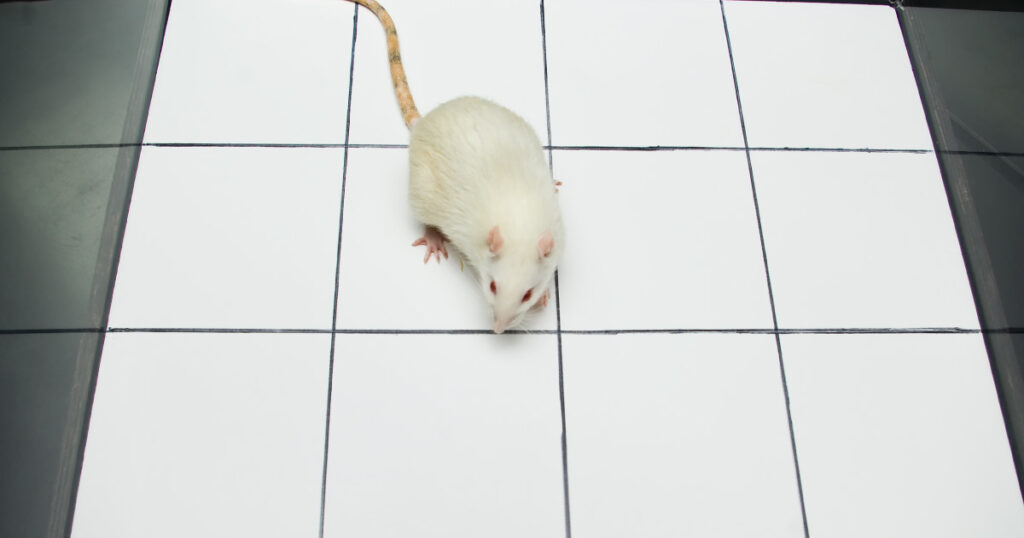
Imagination is often considered a uniquely human trait. Simply put, it is what allows us to think about things that aren’t happening in that moment, and it plays an integral part in our day-to-day lives. We use it when we think through our calendar for the day, consider restaurant options for dinner, or visualize the best route. It turns out this trait might not be as unique to humans as we thought. In fact, a study published in Science suggests that we might share this ability with rats (1).
Rats are the most divisive of rodents. Some people see disease-carrying scourges; some see intelligent, affectionate creatures with larger-than-life personalities; and still others simply can’t get past their bare tails and small eyes. Love them or hate them, science has shown that there is more to these creatures than meets the eye. They are intelligent, ticklish and empathetic; and the study in Science suggests, imaginative.
Where in Our Brain Does Imagination Come From
Imagination is important, but where in the brain does it live? Our brains are a vast network of electronic signals speeding from place to place. Scans indicate that much of the activity associated with imagination happens in the hippocampus, which is the area of the brain critical for memory and learning. For example, we know that when people navigate, there is a specific pattern of activity in the hippocampus and that the pattern changes with the destination. These patterns occur even when people only think about traveling to those locations. Similarly, rats show the same patterned activity in the hippocampus when using spatial memory to navigate their environment, like when they navigate a maze. What was unknown was if rats could imagine moving through their environment the way people do.
Virtual Reality to the Rescue
You can’t ask a rat to imagine running through a maze, so scientists had to find a different way to answer their question. The solution was a meeting of mind and machine—a virtual reality interface for rats. By standing on top of a spherical treadmill (think track ball for your computer), the rats were able to navigate wherever they wanted to within the virtual 3D world the scientist had created. Specifically, they were rewarded every time they approached a spiral shaped pillar in this virtual world. At the same time, electrodes implanted into the rat’s brains let the scientists monitor activity in the hippocampus as they learned to perform the task.
Once the rats had mastered this activity, the scientist took away the treadmill, and instead used activity in the rats’ brain to orient them in the virtual reality world. To earn their reward in this test, which the scientist called ‘Jumper’, the rats had to imagine maneuvering to the spiral column. Although it took them more time to imagine the path to the pillar than it had for them to “run” it on the treadmill, they did imagine their way to the correct location. Their routes through the virtual world showed effective, map-based navigation.
In humans, imagination also involves scenarios visualized from a third person perspective where other objects or individuals might play an active role. It also includes times when it is necessary to hold a single thought for an extended period of time. The obvious next question was: Could rats do the same thing?
Enter the ‘Jedi’ Test
Unlike Jumper, which tested if rats could imagine moving from point A to point B, Jedi tested if they could imagine moving an object. To earn their reward for this test, the rats would need to imagine moving an object closer to a goal and then hold it there. Once again, the rats went through the same treadmill training process, only this time they were rewarded for moving a virtual object closer to a visual goal and keeping it there. After training was complete, the rats were held in one place (with freedom to turn), and their movement and location was based on brain activity. Once the rats successfully moved the object close to the goal and held it there for a defined period, a new goal appeared in a random location. Again, the rats were able to imagine moving the object to this new, random, location. These results showed that rats can think about objects and locations even if they aren’t directly in front of them, and they can imagine both moving an object to a known location as well as image moving it to a new random location.
All this work is cool, but why should we care?
These results show that brain machine interfaces (BMI) can be used to study complex cognitive tasks associated with imagination and recall, whereas in the past these interfaces were mostly used to study motor activities. It offers a glimpse into how our brain works to translate electronic impulses into both wild daydreams and mental maps that lead us home every night. It suggests a (distant) future where these interfaces could help people who are paralyzed, have suffered a stroke or experience other types of brain injury achieve more independent, normal lives. And finally, it serves as a reminder that these often-maligned rodents are more intelligent, complex and imaginative than we give them credit for being.
Reference
- Lai, C. et al. (2023) Volitional activation of remote place representations with a hippocampal brain–machine interface. Science 382, 566–73.
Kelly Grooms
Latest posts by Kelly Grooms (see all)
- The Battle of Shiloh’s Angel’s Glow: Fact, Civil War Legend or Modern Myth? - July 11, 2024
- Mind Control, Mutilation and Death. The Fungal Fate That Lurks in Waiting for Emerging Periodical Cicadas - June 13, 2024
- Measles and Immunosuppression—When Getting Well Means You Can Still Get Sick - May 13, 2024
